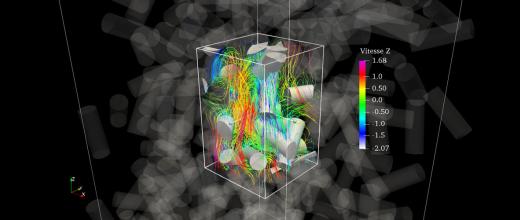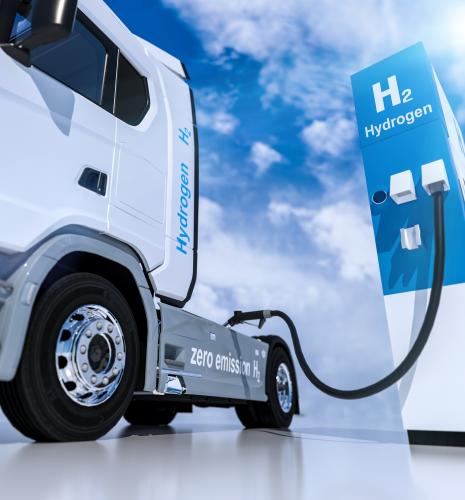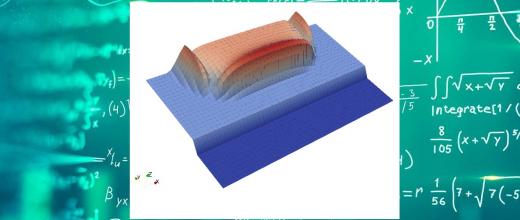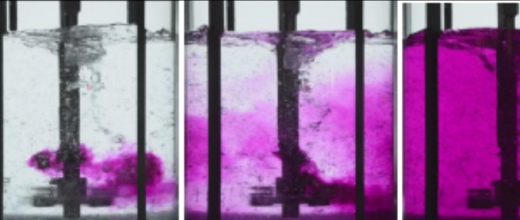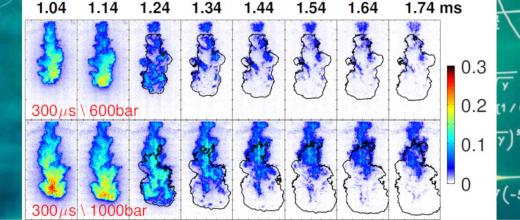
News in brief
Numerical simulations of reactive Taylor flows
[ Simulation for the mastery of physical phenomena ] Compared with conventional stirred reactors, microfluidic systems are of great interest for process intensification, combining low reagent requirements with better performance in terms of mass and heat transfer. In this type of micro-reactor, segmented flows in micro-tubes (also known as Taylor flows) have, for example, been successfully tested at IFPEN to intensify the ethylene oligomerization reaction.

Individual page
Philippe BÉARD
Research engineer
Dr, PhD in Fluid Mechanics
Dr, PhD in Fluid Mechanics
PhD in Fluid Mechanics at ISAE-SUPAERO, Toulouse, France in 1994. Research engineer in the Systems Simulation and Modelling Department from 1996 to 2008. Since 2008, research engineer in the Chemical

News in brief
Microfluidics to understand and overcome geological clogging
Injectivity in geological formations is a well documented factor in fields related to new energies and the climate (geothermal energy, underground CO2 storage, etc.). The clogging of geological formations, a recurrent problem causing injectivity losses, is associated with the fact that reinjected water frequently carries a high concentration of suspended organic and mineral elements, in the form of colloidal particles. To attempt to overcome this clogging, or at the very least minimize it, it is important to have a clear understanding of the mechanisms at work. Such was the aim of this PhD research conducted using a microfluidics approach (Figure 1) combining two visualization techniques: optical imaging and laser-induced fluorescence.

News in brief
Uncertainty quantification for the turbulent dispersion of traffic-related pollutants on a micro-urban scale
In urban zones, road traffic is responsible for a high proportion of pollutant emissions, with a significant impact on air quality, which represents a major public health issue. Atmospheric dispersion can be comprehensively taken into account using CFD. However, random uncertainties, of both natural and anthropogenic origin, can affect its predictive capacity. Concerning this prediction, the PhD research was aimed at quantitatively evaluating the impact of uncertain parameters: firstly, meteorological and, secondly, those related to road traffic. To do this, “high-fidelity” simulations of pollution dispersion on a micro-urban scale (neighborhood) were conducted...

News in brief
Foaming processes
Metal- and ceramic-based solid foams are porous structures that have begun to be used relatively recently in the field of chemical processes although they have been the focus of research at IFPEN for a few years already. Due to their 3D texture, made up of a multitude of juxtaposed spherical cavities (familiar in the field of heterogeneous catalysis), these structures are highly porous (around 70-80%) and have a large specific surface area. On the face of it, this is associated with good external transfer performances...

News in brief
Modeling manufacturing by precipitation - A skill set for the production of battery cathode materials
Building on knowledge acquired relating to alumina precipitation synthesis for heterogeneous catalyst supports, IFPEN’s teams set about working on pCAM synthesis for Li-ion batteries. These materials are indeed also obtained by precipitation in stirred tank reactors, which shares similarities with alumina synthesis (nucleation, growth and agglomeration phenomena). Nevertheless, they come with their own challenges and, consequently, with new research opportunities...

News in brief
SC7 - Sensitivity analysis of pollutant concentration maps to weather conditions and traffic parameters
Urban road traffic is a significant source of pollutant emissions that impacts air quality. Being able to predict the dispersion of these emissions is of major importance for evaluating real exposure and planning traffic flows. To this end, a PhD research project proposed a modeling chain making it possible to simulate highly turbulent flows on a local urban scale and obtain two-dimensional spatial maps of pollutant concentration...

News in brief
SC3 - Microfluidics supporting preserved injectivity
Injectivity in geological formations has long been an important factor in oil production (enhanced recovery) but it is now just as important in fields related to new energies and the climate (geothermal energy, CO2 storage, etc.). Injectivity losses, which result from the clogging of geological formations, are a recurrent problem associated with the fact that reinjected water often carries a high concentration of organic and mineral elements in suspension, in the form of colloidal particles...

News in brief
Modeling wind turbine wake: a question of atmosphere!
In the wake zone located behind each wind turbine, wind velocity is reduced and turbulence increased. This results in a reduction in the lifespan of machines located downstream as well as a decrease in a windfarm’s overall electricity production. To limit these effects and help optimize the siting of turbines on windfarms, analytical wake models exist in the literature but they incorporate numerous simplifying hypotheses concerning wind turbines and their environment...
Individual page
Guillaume VINAY
Research Project Manager "Multiphysics Modeling of Coupling Phenomenon", PhD research engineer in numerical fluid mechanics
Guillaume Vinay studied at ENSEIRB-MATMECA in Bordeaux before completing a PhD in Numerical Mechanics at Mines ParisTech. Graduating in 2005, he was awarded the thesis prize of the Groupe Français de



